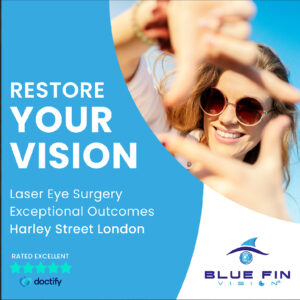Online gaming has evolved into a multifaceted industry that captivates millions of players around the globe. From its humble beginnings as a niche hobby to its present status as a cultural and technological powerhouse, online gaming has fundamentally f8bet changed the entertainment landscape. In this article, we explore the key milestones in the evolution of online gaming, its current state, and the exciting future that lies ahead.
The Early Days: Connecting Players Over the Internet
The concept of multiplayer gaming over the internet can be traced back to the 1980s, when the first online games emerged on local area networks (LANs) and early dial-up internet connections. Games like Spasim (1974), which allowed players to connect via phone lines, and Maze War (1974), which featured basic multiplayer functionality, laid the foundation for what would become the online gaming boom.
In the 1990s, as the internet became more widespread and broadband connections became the norm, online gaming took its first giant leap forward. Games like Doom (1993) and Quake (1996) enabled players to connect over the internet and compete in deathmatch-style battles. These early first-person shooters were a revelation, allowing players to interact in real-time and experience competitive multiplayer gameplay on a global scale.
This era also saw the rise of early online multiplayer games such as EverQuest (1999), which introduced the concept of Massively Multiplayer Online (MMO) games. These virtual worlds allowed players to embark on epic quests, interact with others, and explore vast digital landscapes—an experience that would become a hallmark of online gaming.
The Boom of MMOs and Social Gaming
The early 2000s marked the beginning of the golden age of MMOs, with World of Warcraft (2004) leading the charge. This game revolutionized the genre, attracting millions of players to a persistent virtual world where they could team up, fight monsters, and explore dungeons together. The game’s immense success not only solidified online gaming as a mainstream activity but also highlighted the social aspect of gaming. Players could form guilds, chat with one another, and engage in cooperative play—creating a rich online community.
As the MMO genre grew, other genres of online gaming also started to gain traction. Real-time strategy games like Starcraft II (2010) and multiplayer online battle arena (MOBA) games such as League of Legends (2009) further expanded the diversity of online gaming. These games introduced new types of competition and required players to develop specialized strategies and teamwork skills.
The growing popularity of social gaming platforms like Facebook also allowed games like FarmVille (2009) to connect players through casual multiplayer experiences. These types of games emphasized easy-to-learn mechanics and fostered a sense of connection through social interactions, further cementing gaming as a widespread social activity.
The Rise of eSports: Competitive Gaming Takes Center Stage
By the late 2000s and early 2010s, online gaming had transformed into a competitive sport—eSports. Competitive gaming tournaments, with large cash prizes and sponsorships, began to attract professional players and dedicated fans. Games like Dota 2 (2013), Counter-Strike: Global Offensive (2012), and Overwatch (2016) gave rise to professional leagues and competitions that filled arenas and attracted millions of viewers online.
The rise of eSports was driven by several factors, including the growing popularity of streaming platforms like Twitch and YouTube Gaming. These platforms allowed players to broadcast their gameplay to global audiences, creating new opportunities for professional gamers to gain recognition and build fanbases. As eSports tournaments began to offer larger prize pools and attract sponsorships from major companies, gaming transitioned from a casual pastime to a viable career path for skilled players.
eSports also brought with it a level of organization and professionalism, with dedicated teams, coaches, and analysts who help players refine their skills. The rise of eSports has helped to validate gaming as a legitimate form of entertainment, on par with traditional sports, and the industry continues to grow in popularity.
Mobile Gaming: Reaching New Audiences
Mobile gaming has become a significant force in the gaming industry, bringing online gaming experiences to a broader and more diverse audience. The widespread use of smartphones and tablets has made gaming accessible to people who may not have had access to traditional gaming consoles or PCs. Games like Angry Birds (2009), Clash of Clans (2012), and Candy Crush Saga (2012) have become household names, appealing to both casual and more dedicated players.
What sets mobile gaming apart is its accessibility. Players can enjoy a quick session of a game anytime, anywhere, without the need for expensive hardware or complicated setups. Free-to-play games, supported by in-app purchases, have become the norm in mobile gaming, allowing players to enjoy games for free while offering the option to purchase cosmetic items, power-ups, or other content.
The mobile gaming market has also benefited from the increasing popularity of augmented reality (AR) games. Pokémon GO (2016) brought AR gaming into the mainstream, encouraging players to explore the real world while interacting with digital elements. This innovative approach to gaming has led to the development of more AR titles, and as technology improves, AR is expected to play an even larger role in shaping the future of gaming.
The Future: Cloud Gaming, VR, and the Metaverse
The future of online gaming looks incredibly promising, with new technologies poised to push the boundaries of what’s possible. Cloud gaming, virtual reality (VR), and the concept of the metaverse are among the most exciting developments in the industry.
Cloud gaming services like Google Stadia, Xbox Cloud Gaming, and NVIDIA GeForce Now are revolutionizing the way we play games. By streaming games from powerful servers rather than relying on local hardware, cloud gaming allows players to enjoy high-quality games on devices with less processing power. This removes the need for expensive gaming consoles or PCs, making gaming more accessible than ever.
Virtual reality has already begun to transform gaming with immersive experiences that put players inside the game world. VR games like Beat Saber (2018) and Half-Life: Alyx (2020) offer players a level of immersion that traditional gaming cannot match. As VR technology becomes more advanced and affordable, it’s expected that online gaming will continue to evolve in new and exciting directions, offering even more immersive and interactive experiences.
The concept of the metaverse—the idea of a fully immersive, interconnected virtual world where players can interact, work, and socialize—has also gained significant attention. Companies like Facebook (now Meta) have been investing heavily in creating virtual worlds that combine gaming, socializing, and even business activities. As the metaverse continues to develop, online gaming may become even more integrated into our daily lives, offering a new space for entertainment, work, and social interaction.
Conclusion: A Digital Revolution
From its early days as a niche activity to its current status as a global entertainment powerhouse, online gaming has transformed the way we play, socialize, and interact with technology. The rise of eSports, mobile gaming, cloud gaming, and virtual reality signals that the industry is only going to grow and evolve in exciting new ways.
As technology continues to advance and new innovations emerge, the future of online gaming looks brighter than ever. Whether you’re a casual player, a professional eSports athlete, or someone exploring virtual worlds, online gaming offers an ever-expanding universe of entertainment. The next phase of online gaming promises even more immersive, connected, and engaging experiences, shaping the way we engage with digital entertainment for years to come.…

 Online gaming has experienced rapid growth in recent years, becoming a dominant force in the entertainment industry. What once began as a hobby for a small group of enthusiasts has now evolved into a global phenomenon, connecting millions of players from all corners of the world. The rise of faster internet speeds, powerful gaming consoles, and mobile devices has revolutionized the way people play, interact, and connect. Online gaming has become more than just a form of entertainment—it has become a social activity, a competitive sport, and even a career path for many.
Online gaming has experienced rapid growth in recent years, becoming a dominant force in the entertainment industry. What once began as a hobby for a small group of enthusiasts has now evolved into a global phenomenon, connecting millions of players from all corners of the world. The rise of faster internet speeds, powerful gaming consoles, and mobile devices has revolutionized the way people play, interact, and connect. Online gaming has become more than just a form of entertainment—it has become a social activity, a competitive sport, and even a career path for many.












 …
…